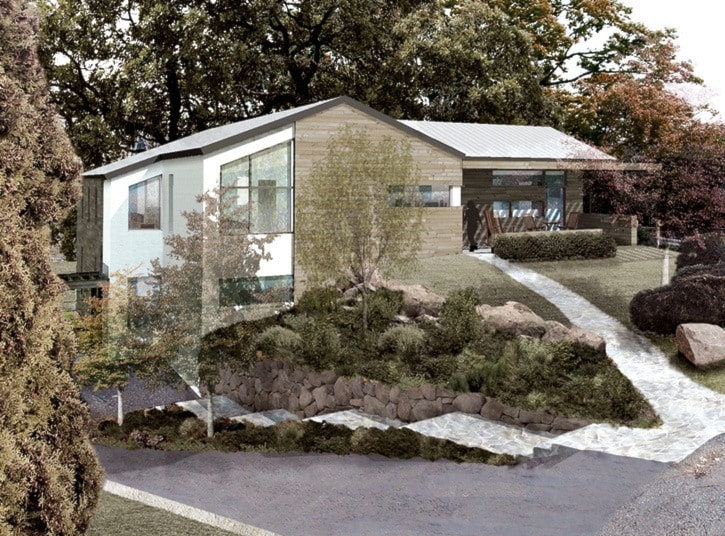Mark Bernhardt’s utility bills last month came in at $533.
This time next year, he hopes to be paying one-tenth of that for his heat, hot water and all the electricity his home needs.
The 30-year-old is looking to build a “passive house” on Oak Crest Drive in Saanich. Extra thick walls as well as the highest quality insulation, doors and windows (among other features) are used to drastically improve energy efficiency.
Once complete, Bernhardt expects his house to be between 80 to 90 per cent more efficient than the standard home.
“It’s science-based. It’s focused strictly on energy efficiency, which is the key ingredient to building efficiency,” says project manager Rob Bernhardt, Mark’s father. “This forces you to look at certain things from a physics perspective.”
By focusing on such principles as building shape, orientation, airtightness and heat recovery ventilation, the Bernhardts expect to pay less than $1,000 per year on heat, hot water and electricity for the 800-square-metre duplex. And that’ll be with four adults and two kids living there.
The passive house standard is the most stringent energy efficiency standard in the construction industry, with a cap on the amount of energy it uses. This cap is 1/18th that of what the average house consumes.
Casey Edge, executive officer of the Canadian Home Builders’ Association, says he’s not aware of any passive houses built in the region to date. He attributes that to the higher upfront costs, as the building requires extra levels of planning and construction.
He expects most developers will stay away from passive homes, unless they’re specifically asked – as in the Bernhardts’ case – to build one.
“The people who can afford to pay for it, can pay for it. Most young families getting into a new home, can’t afford all the bells and whistles of a passive home – but a reasonably efficient home they can afford,” he said. “There’s no point in building passive homes that people can’t afford to buy.”
The Bernhardts argue the home may cost more to build, but those extra expenses should pay for themselves through significant energy savings.
“We’re designing a house that’s intended to be sustainable. It’s not a normal house with green add-ons,” Mark said.
“If you can afford to build a house, why not build this type of house?”
Rob says he hopes more homeowners and developers will look to adopt this type of energy efficiency standard.
“This type of home is very supportive of (Saanich’s) community goals for sustainability. This type of construction is very important for getting there.”
kslavin@saanichnews.com
Technical passive housing standards:
• The building must use less than 15 kWh/m² per year for heating and cooling. (The average home uses 275 kWh/m² per year.)
• The building must use less than 120 kWh/m² per year on primary energy (heat, hot water, electricity).
• The air change rate in the building must be measured at less than or equal to 0.6 ACH at 50 Pa.
– Courtesy of Passive House Institute U.S.
